HOME > Achievements
Research achievements
2025.5.29 Enhanced Efficiency in Tin-based Perovskite Solar Cells: Optimizing the Electron Transport Layer (Press release, University of Tsukuba )
We employed electron spin resonance to observe electron diffusion at the interface between the tin-based perovskite and the electron transport layer, while also examining band bending at this interface. The investigation revealed that conventional PCBM, a fullerene derivative used in the electron transport layer, induces band bending at the interface with tin-based perovskite, facilitating charge recombination. This charge recombination leads to a reduction in open-circuit voltage (the maximum voltage available for extraction). By contrast, when indene-C60 diadduct (ICBA) is utilized in the electron transport layer, the researchers found that the resulting band bending effectively suppresses charge recombination, leading to higher open-circuit voltage. These findings are expected to enhance the efficiency of tin-based perovskite solar cells. |


|
2025.1.9 Performance-Improvement Mechanisms of Tin-Based Perovskite Solar Cells (Press release, University of Tsukuba )
We have used electron spin resonance to investigate an RP perovskite solar cell's internal state during operation from a microscopic perspective. Perovskite solar cells have a structure in which hole and electron transport layers surround a perovskite crystal. First, when no light was irradiated on the RP perovskite solar cell, holes diffused from the hole transport layer to the RP perovskite. This led to the formation of an energy barrier at the hole transport layer-RP tin perovskite interface, which suppressed the backflow of electrons and hence improved the performance. Second, under sunlight irradiation, electrons moved from the RP tin-based perovskite to the hole transport layer, attributable to the high-energy electrons produced by short-wavelength light, such as ultraviolet rays. Further, they found that this electron transfer increased the energy barrier at the hole transport layer-RP tin perovskite interface, further improving the device's efficiency. Understanding the mechanism behind the performance improvements during device operation is crucial for developing highly efficient, long-lasting solar cells and will contribute to future research developments. |


|
2024.10.24 Investigating Performance Limitations in Cost-Effective Materials for Perovskite Solar Cells (Press release, University of Tsukuba )
We have employed ESR to investigate the underlying mechanisms for the performance limitations of perovskite solar cells incorporating HND-2NOMe, focusing on the material’s internal properties at a microscopic scale. We discovered that in the absence of illumination, holes migrate from perovskite to HND-2NOMe, forming an energetic barrier at the perovskite/HND-2NOMe interface. This barrier impedes hole flow, leading to performance limitations. Furthermore, solar cells incorporating HND-2NOMe demonstrate reduced hole accumulation under solar irradiation, which contributes to the stability of the hole transport function. Identifying the factors responsible for performance limitations while maintaining stable functionality represents a substantial breakthrough with important implications for formulating fabrication guidelines aimed at enhancing device performance. |

|
2023.6.2 Operation Mechanism of Light-Emitting Electrochemical Cells: A Cheaper Alternative to Organic Light-Emitting Diodes (Press release, University of Tsukuba )
We have analyzed the operating mechanism of light-emitting electrochemical cells, which are garnering interest as the future of energy-saving light-emitting devices, by employing the electron spin resonance method. We observed a correlation between the advancement of hole and electron injection into organic light-emitting materials and the increase in luminance. This finding implies that as part of the operation mechanism, the injected charges spread across the light-emitting layer. The techniques developed by our research team provide unprecedented molecular-level insights into the operation mechanisms of LECs. It is anticipated that these insights can help to effectively drive the development of affordable, environment-friendly light-emitting devices. |
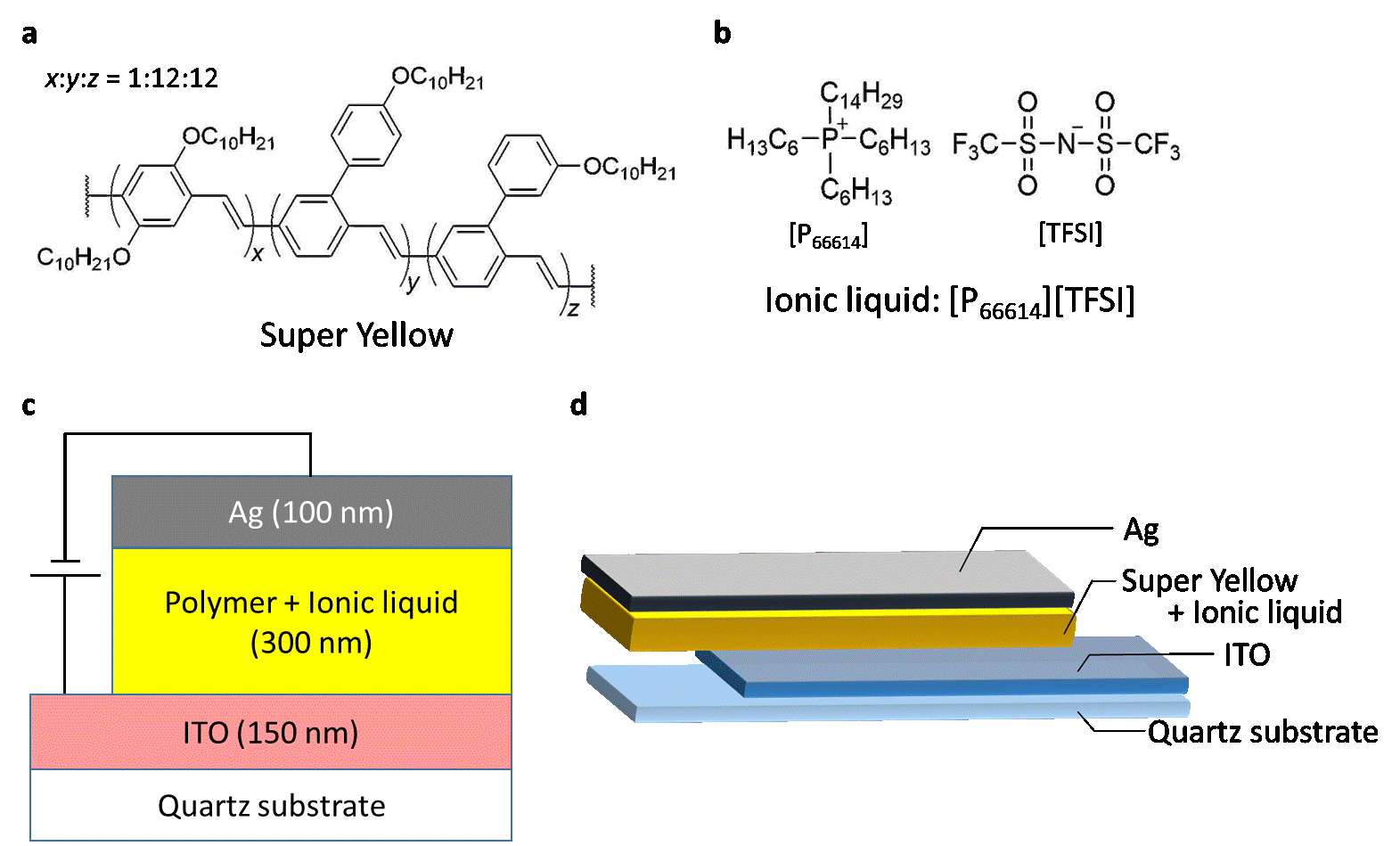
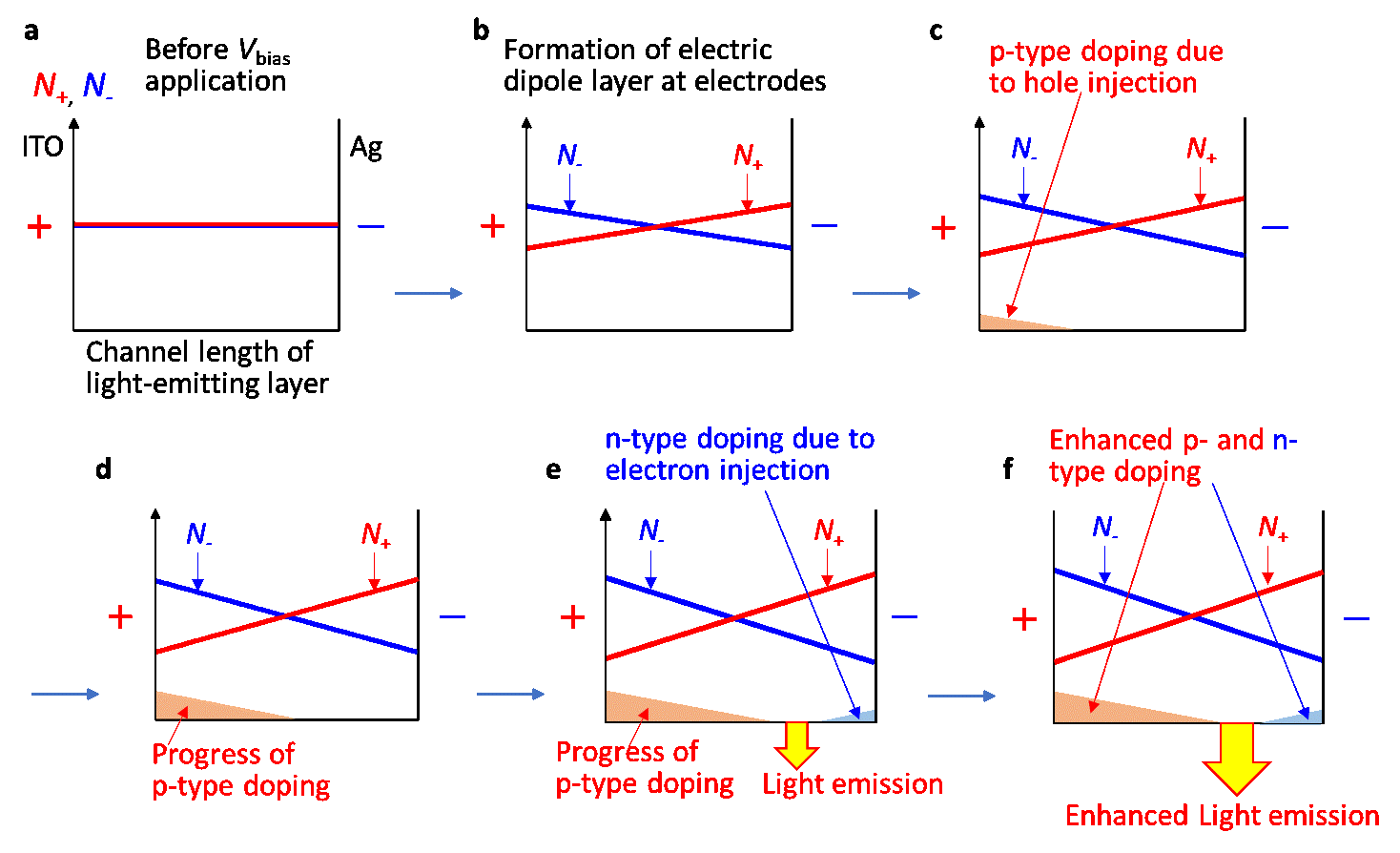
|
2022.4.20 Uncovering the secret of ternary polymer solar cell success (Press release, University of Tsukuba )
We have successfully taken a closer look at ternary polymer solar cells (PSCs) in operation using electron spin resonance (ESR) spectroscopy. The ESR spectroscopy experiments with sunlight showed that the short-circuit current decreased as a result of the accumulation of electrons in large molecule n-type semiconductor PC61BM and holes in polyme p-type semiconductorr PTzBT. Adding an acceptor molecule ITIC was found to reduce this accumulation by enhancing the orientation of the chainlike PTzBT polymer molecules in the active layer. Molecular level comparison of the PTzBT/PC61BM system with and without added ITIC allowed us to establish the mechanism for the improvements in stability and power conversion efficiency observed when ITIC is added. It is hoped that this insight will contribute to the commercial realization of cost-effective flexible polymer solar cells. |
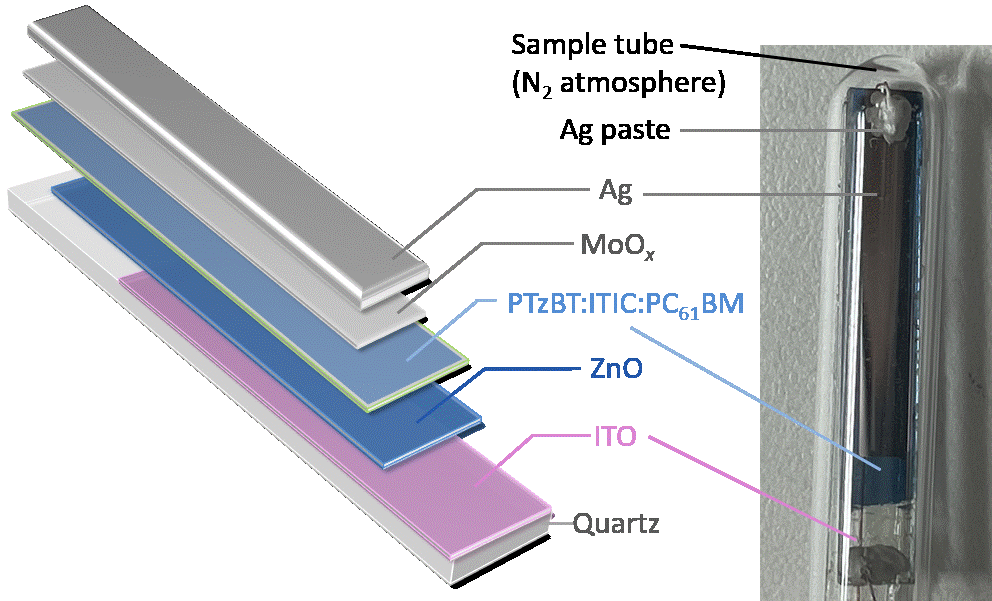
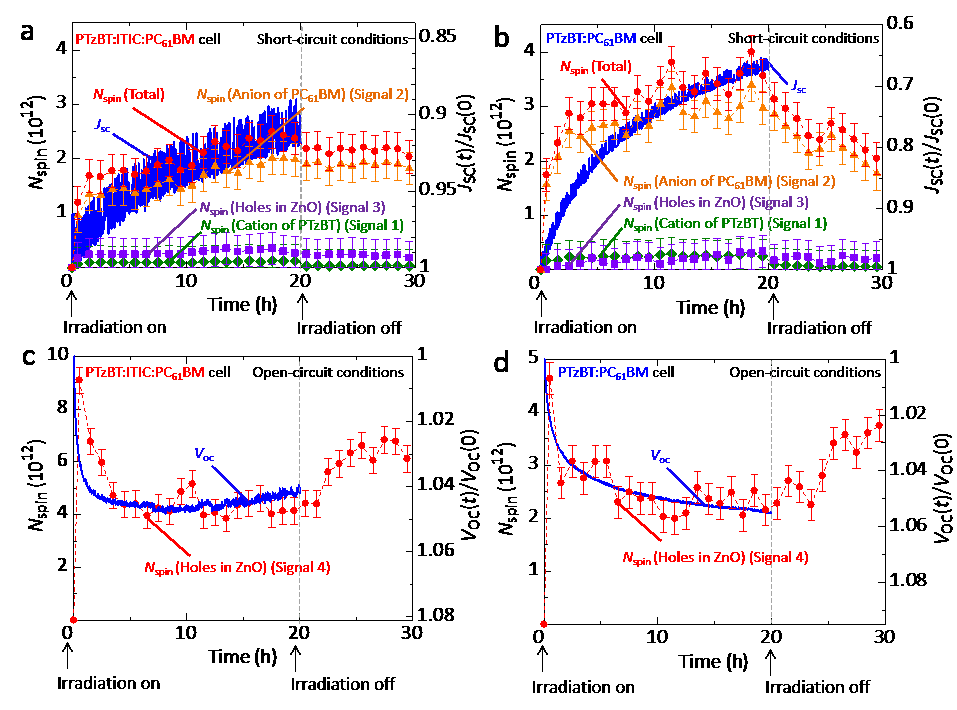
|
2021.3.5 Taking 2D Materials for a Spin (Press release, University of Tsukuba )
We have successfully used electron spin resonance (ESR) to monitor the number and location of unpaired spins coursing through a molybdenum disulfide transistor. The experiment required the transistor to be in operation while the spins are being measured. The ESR signals were measured simultaneously with the drain and gate currents. Theoretical calculations further identified the origins of the spins. Molybdenum disulfide was used because its atoms naturally form a nearly flat two-dimensional structure. The molybdenum atoms form a plane with a layer of sulfide ions above and below. We have found that charging the system with the additional electrons in a process called n-type doping was important for creating the spins. In contrast with previous work on other 2D materials, the n-type doping allowed us to achieve better control of the electronic spins. |
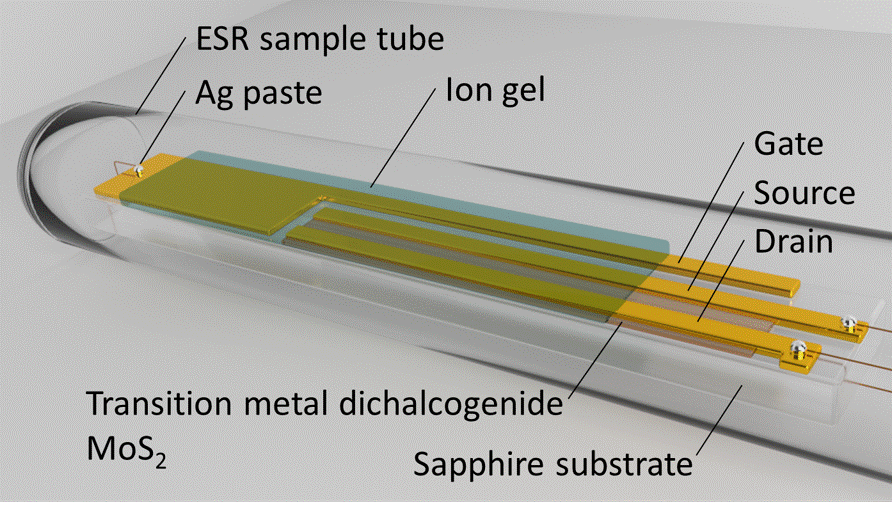
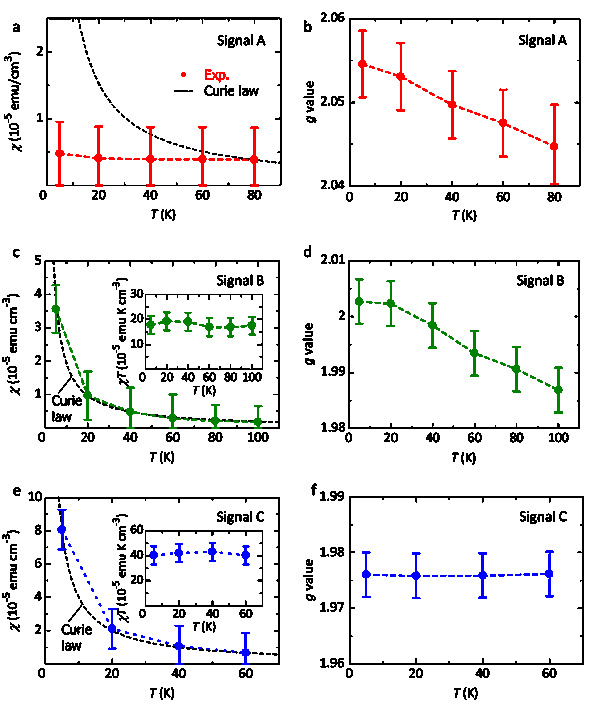
|
2020.12.4 Shining a light on what's really happening in perovskite solar cells (Press release, University of Tsukuba )
We have carried out ESR spectroscopy on perovskite solar cells while they were in use, which gave us a real-time picture of the molecular-level changes. Specifically, we observed the charges and defects, and related spin states, in the solar cell layers while the current-voltage characteristics of the solar cells were being measured. This in-depth investigation of perovskite solar cells in operation showed that changes in the spin states result from changes in hole transport as well as the formation of interfacial electric dipole layers. It was therefore concluded that cell deterioration could be prevented by improving charge mobility in the hole transport material and preventing electric dipole layer formation. Establishing that changes in spin states are correlated with device performance has significantly broadened our understanding of perovskite solar cells. |
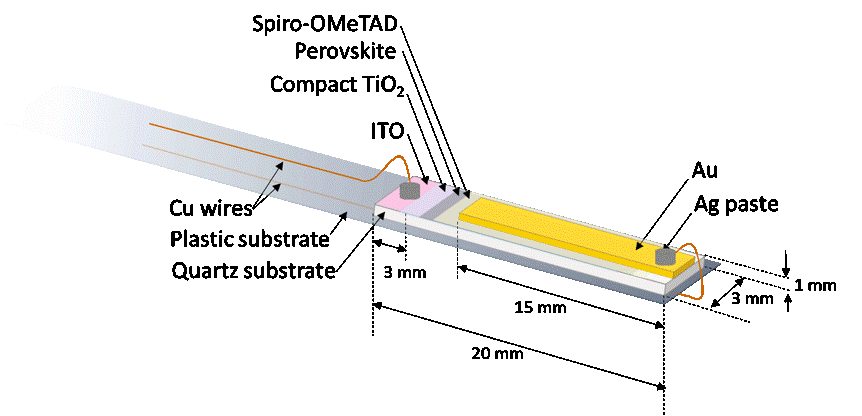
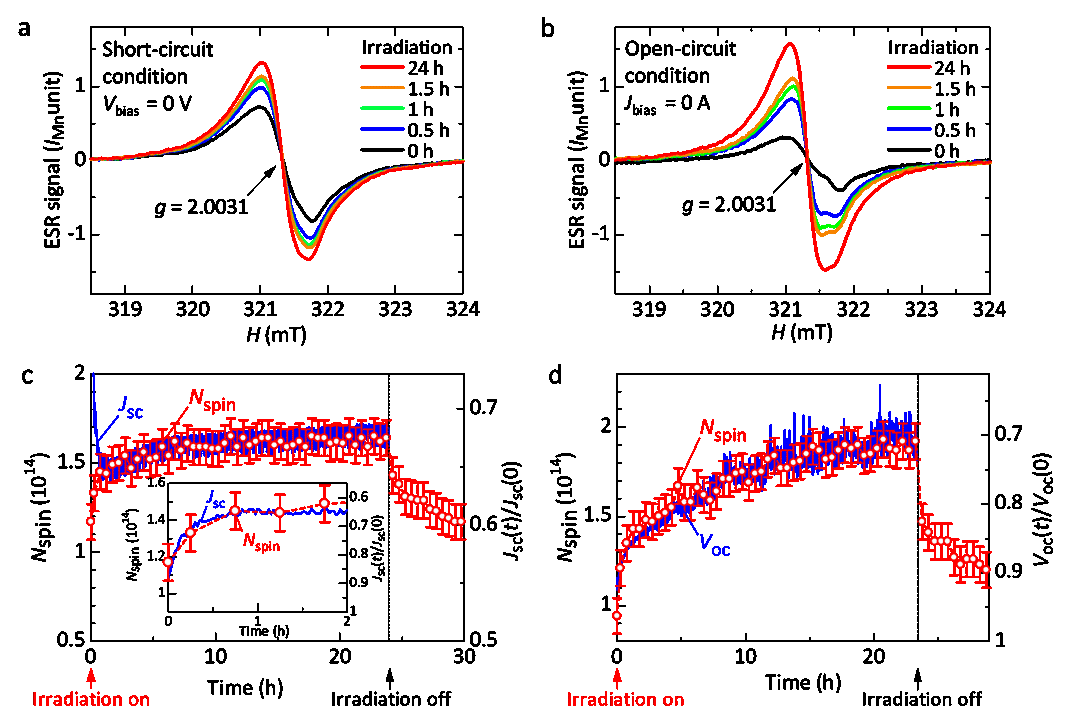
|
2017.3.21 Revealing the Microscopic Mechanisms in Perovskite Solar Cells (AIP Publishing press release)
We have revealed the physics for how an important component of a perovskite solar cell works -- a finding that could lead to improved solar cells or even newer and better materials. We have used electron spin resonance (ESR) spectroscopy to show that the mechanism of LiTFSI doping to a hole-transport material spiro-OMeTAD is, in fact, responsible for improving the ability of spiro-OMeTAD to carry current. In experiments without light, we found that the number of electron spins in spiro-OMeTAD increased by two orders of magnitude after being doped, confirming the effect of LiTFSI. To see how doping affects the efficiency of a perovskite/spiro-OMeTAD solar cell, we then conducted our experiments on the two materials layered together, with the lights on. The light induces holes to transfer from perovskite to spiro-OMeTAD and generate electric current. We found that doping boosted this hole transfer, demonstrating how LiTFSI improves the efficiency of a solar cell. (Ref: Applied Physics Letters 2017) |
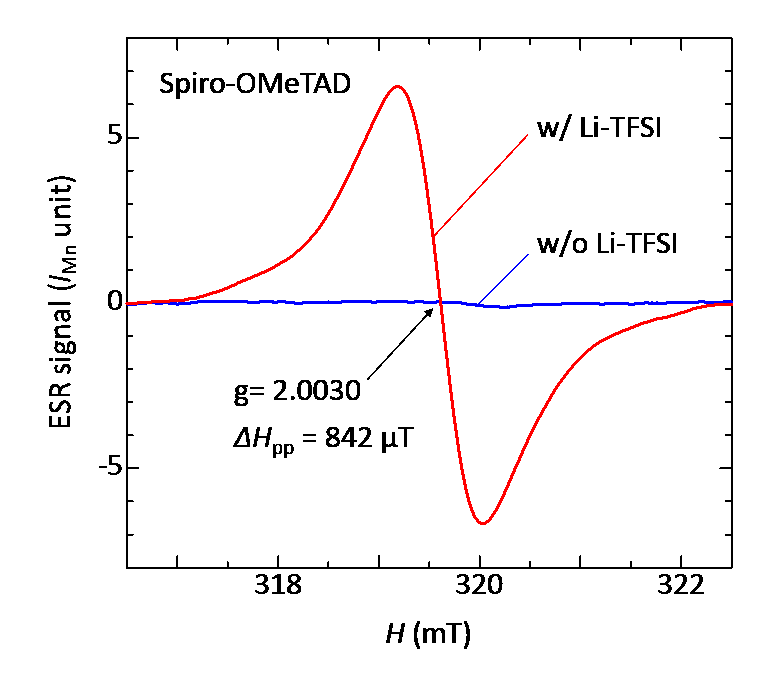
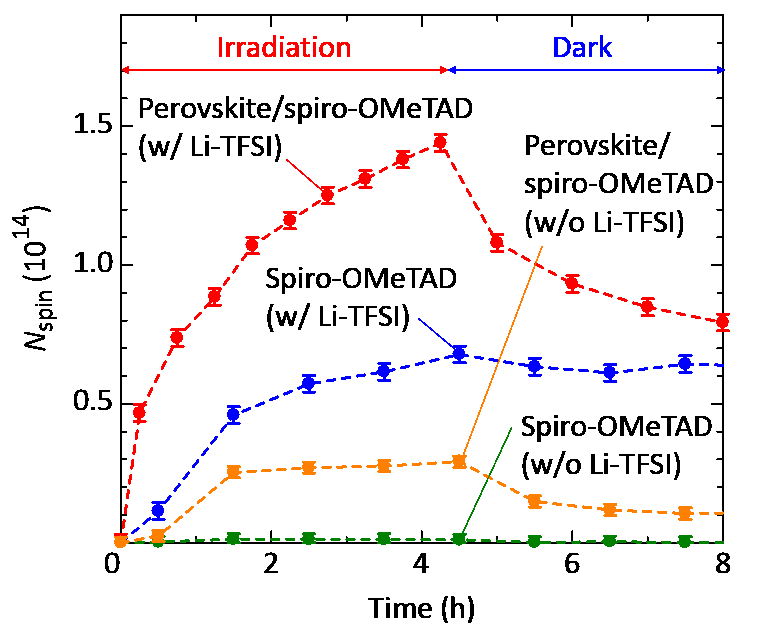
|
2013.2.28 発電中の高分子太陽電池の劣化の原因を解明(JSTプレスリリース)
| 高分子太陽電池に光を照射して蓄積する電荷の状態を解明し、それが特性の劣化と明らかな相関があることを、世界で初めて観測しました。
今回、電子スピン共鳴法(ESR法)を用いて、実際に太陽電池を駆動させる同じ条件下で蓄積された電荷の数を精密に測定し、さらに太陽電池特性を同時に計測する手法を開発しました。この計測の有利な点は、電荷が蓄積した場所を分子レベルで解明できるだけでなく、電荷の蓄積と特性の劣化との相関を、素子を駆動したままリアルタイムで高精度に直接測定できるところです。その結果、高分子材料中に電荷が蓄積され、蓄積量が多くなるほど劣化するという明らかな相関があることも分かりました。 (関連論文:Advanced Materials 2013) |
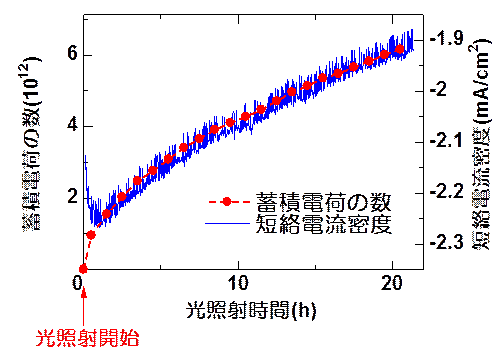
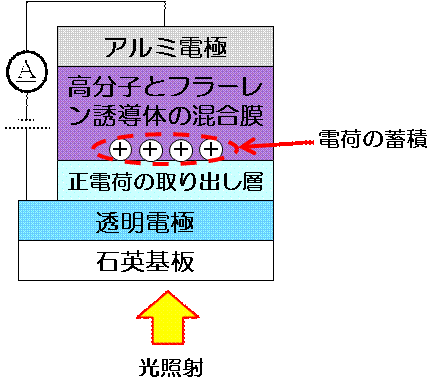
|
2012.3.2 有機薄膜太陽電池の劣化機構を分子レベルで解明 -新解析手法による有機太陽電池の高効率化へ-(JSTプレスリリース)
有機薄膜太陽電池注の高効率化につながる分子レベルの新しい解析手法を、世界で初めて開発しました。 今回、電子スピン共鳴(ESR法)を用いて、太陽電池内部の構造欠陥が起こる部位を測定できる「ミクロな解析測定手法」の開発に成功しました。この測定法の有利な点は、内部構造の電荷状態や分子配向などを精度良く観察できるところです。その新手法によって、素子の初期特性に悪影響を与える電荷が、素子の正電荷(正孔)取り出し層とペンタセン層との界面に形成されることが分かり、その電荷形成の原因を取り除くことで、素子特性の向上が可能であるという分子レベルの観点からの明確な指針が与えられました。 本手法の確立によって、太陽電池素子作製の初期段階で素子の潜在能力を検討し、高効率化を目指せるデバイスを取捨選択できるようになります。さらに、既存・新規の太陽電池素子について、構造欠陥部位を分子レベルで測定・解明し、改善を図ることで、さらなる特性の向上及び高効率化を目指すことが可能となり、有機薄膜太陽電池の発展に大きく寄与することができます。 |
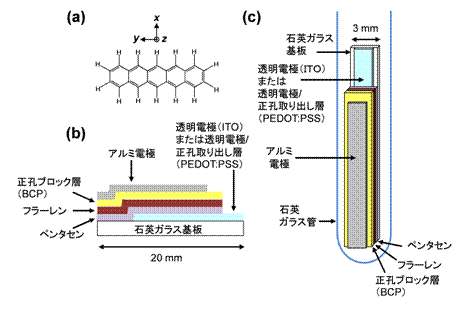
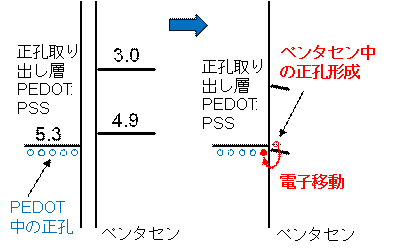
|
2006.12.21 トランジスター材料の新しい研究手法を開発(筑波大学記者会見)
有機トランジスタを研究するための、電子スピン共鳴を用いた新しい手法を開発し、トランジスタ中の電荷キャリアの本質的で微視的な性質を研究することに成功しました。 |
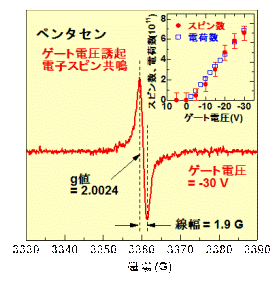
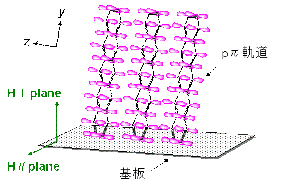
|
Details of research achivements
For detailed information, please see the following links.